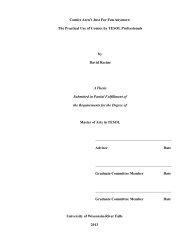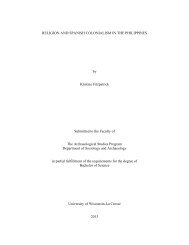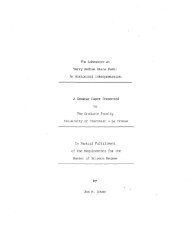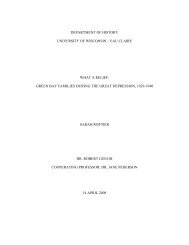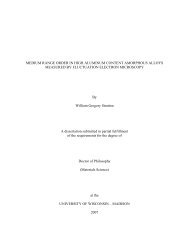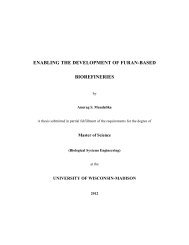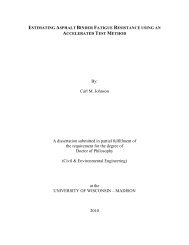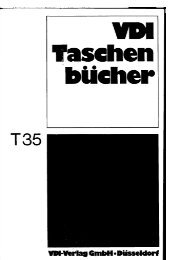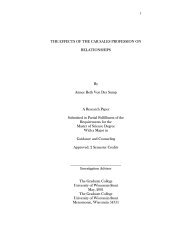The effectiveness of eye movement desensitization and reprocessing
The effectiveness of eye movement desensitization and reprocessing
The effectiveness of eye movement desensitization and reprocessing
You also want an ePaper? Increase the reach of your titles
YUMPU automatically turns print PDFs into web optimized ePapers that Google loves.
Eye Movement 14<br />
EMDR follows an eight stage process that begins with creating a “safe place” for the<br />
client to begin processing the traumatic experience. <strong>The</strong> initial stage begins by the clinician <strong>and</strong><br />
client identifying a place that feels safe <strong>and</strong> peaceful. In stage two, the clinician asks the client<br />
to focus on where they are (the safe place), to feel the emotions, <strong>and</strong> to locate the pleasant<br />
physical sensations. Step three involves the enhancement <strong>of</strong> imagery <strong>and</strong> emotion. <strong>The</strong> client is<br />
asked to report when he or she feels the emotions. In step four the positive response is enhanced<br />
by including a series <strong>of</strong> <strong>eye</strong> <strong>movement</strong>s. <strong>The</strong> direction <strong>and</strong> speed <strong>of</strong> the <strong>movement</strong> is determined<br />
by what is reported to be comfortable for the client. Once this is established, step four begins<br />
<strong>and</strong> the client is asked to go to the place that feels safe <strong>and</strong> peaceful <strong>and</strong> to concentrate on where<br />
in their body the sensations are occurring. <strong>The</strong> client is then directed to follow the clinician's<br />
finger with their <strong>eye</strong>s. At the end <strong>of</strong> each set <strong>of</strong> <strong>eye</strong> <strong>movement</strong> the client is asked to report how<br />
they feel (better or worse). <strong>The</strong> direction <strong>and</strong> speed <strong>of</strong> the <strong>eye</strong> <strong>movement</strong>s may be altered to<br />
facilitate <strong>effectiveness</strong>. In step five the client is asked to identify a single word that describes the<br />
“safe place” <strong>and</strong> to repeat this word while feeling emotionally secure. <strong>The</strong> process is enhanced<br />
by <strong>eye</strong> <strong>movement</strong>s <strong>and</strong> is repeated four to six times (Shapiro, 1995).<br />
In the remaining steps the client is taught “self-cueing”. This process involves steps one<br />
through five <strong>and</strong> the exercise is practiced by the client independently without <strong>eye</strong> <strong>movement</strong>s.<br />
<strong>The</strong> client is asked to bring up the image <strong>and</strong> the word, <strong>and</strong> to experience the positive feelings.<br />
At this point the clinician instructs the client to think about something that is upsetting to them<br />
<strong>and</strong> to notice any negative feelings. <strong>The</strong> client is guided by the clinician until the negative<br />
emotions are gone <strong>and</strong> then practiced without the assistance <strong>of</strong> the clinician. Finally, the client is<br />
encouraged to practice EMDR on their own for simple relaxation <strong>and</strong> stress reduction. In the



